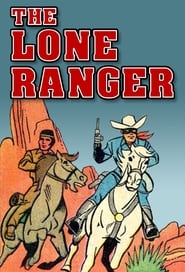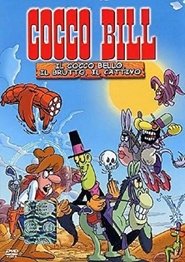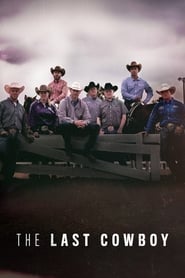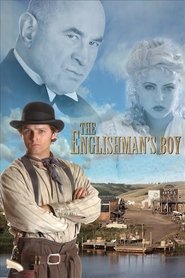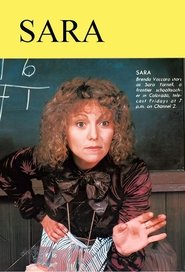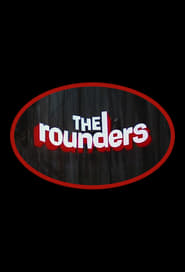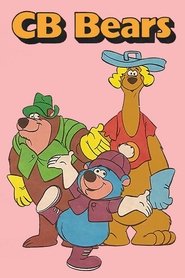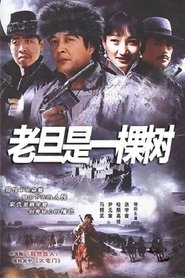Western TV Series - Page 14
-
The Lone Ranger
1966
The Lone Ranger
1966
star 6.6An ex-Texas Ranger fights injustice in the Old West his with Native-American partner. -
Two Faces West
1960
Two Faces West
1960
star 5Two Faces West is a 39-episode half-hour syndicated television western series set in Gunnison in southwestern Colorado, which aired from October 17, 1960, to July 31, 1961. It stars Scottish native Charles Bateman in the dual roles of twin brothers, Rick January, M.D., and Marshal Ben January. Matthew Rapf produced the series. Francis De Sales appeared as Sheriff Maddox; Joyce Meadows portrayed Stacy, and Paul Comi played Deputy Johnny Evans. In the marshal's role, Bateman played a man prone to violent outbursts in his pursuit of law and order; as the physician, he demonstrated calmness and compassion. The series was filmed by Screen Gems at the Iverson's Movie Ranch in Chatsworth in Los Angeles County, California. -
A Thousand Tomorrows
2023
A Thousand Tomorrows
2023
star 8.3Bullrider Cody Gunner faces a great price for a handful of seasons, a mere thousand tomorrows, with the one he loves more than life. -
Cocco Bill
2000
Cocco Bill
2000
star 7A hot-tempered, sharpshooting cowboy and his loyal steed traverse the vast Far West, stumbling onto wildly absurd adventures. -
The Last Cowboy
2019
The Last Cowboy
2019
star 7.4A documentary competition show that chronicles the lives of riders competing in the high-stakes sport of horse reining. The contenders are determined to elevate and preserve the cowboy tradition as they guide horses through precise patterns of circles, spins and stops. Run for a Million serves as the culmination of the series, where the riders compete for a $1 million purse. -
Ned Blessing
1993
Ned Blessing
1993
star 5Alone on Executioner's Row, Ned Blessing is a haggard, old cowboy and former sheriff. With nothing more than reflections on a life that's been filled with danger and excitement, he marks his time waiting and hoping that the man responsible for his imprisonment makes an appearance before the hangman does. With only a few days left to live, Blessing recounts his unbelievable life story. -
Wild Boys
2011
Wild Boys
2011
star 7Wild Boys is an Australian television period drama series that began airing on the Seven Network on 4 September 2011. It is produced by Julie McGauran and Sarah Smith from Southern Star and John Holmes. The series is set in and around the fictional town of Hopetoun and principally filmed in Wilberforce on the Hawkesbury, Nelson, and Glenworth Valley on the New South Wales Central Coast.The series premiered in the UK on TCM UK on 3 March 2013. The series was not renewed after the first season of 13 episodes. -
Präriejäger in Mexiko
1988
star 6.3Mexico in the 1870s. The French expeditionary force lands in Mexico. Emperor Napoleon III of France and local conservatives establish a monarchy in the country and decide to place their protégé, Archduke Maximilian of Habsburg, on the Mexican throne. In the ensuing war of national liberation, the freedom-loving Indians, the Maztecs, led by their chief Bear's Eye, side with the legitimate deposed president of Mexico, Benito Juárez. -
MIDST
2020
MIDST
2020
Midst follows three protagonists – a crotchety outlaw, a struggling cultist, and a diabolical bastard – as their paths intersect in unexpected ways in the town of Stationary Hill after the mysterious civilization known as the Trust becomes interested in the islet of Midst where the town is located. -
The Englishman's Boy
2008
The Englishman's Boy
2008
star 3.3Haunting Film recalls a tragic journey that culminates in one of the most brutal historical events in Canadian history - the Cypress Hills Massacre -
Sara
1976
Sara
1976
star 5The story of Sara Yarnell, a schoolteacher who moves from Philadelphia to the Western frontier to start a new life. She becomes the only teacher in a one-room schoolhouse in Independence, Colorado. -
The Rounders
1966
The Rounders
1966
star 4The Rounders was a 17-episode western-style situation comedy about two cowboys on the fictitious J.L. Ranch in Texas. It starred Ron Hayes as Ben Jones and Patrick Wayne, a son of John Wayne, as Howdy Lewis. The M-G-M television series aired on ABC from September 6, 1966, to January 3, 1967. The program was loosely based on a 1965 film of the same name, The Rounders, starring Glenn Ford and Henry Fonda, set near Sedona, Arizona, rather than Texas. Chill Wills, a native Texan and formerly of CBS's Frontier Circus, appeared as the shady ranch owner, Jim Ed Love. Janis Hansen co-starred as Ben's girlfriend, Sally, and Bobbi Jordan played Howdy's girlfriend, Ada. Jason Wingreen appeared as Shorty Dawes, and Walker Edmiston as Regan. Character actors Strother Martin and J. Pat O'Malley appeared as "Cousin Fletch" and "Vince", respectively. James Brown, formerly the lieutenant on The Adventures of Rin Tin Tin, played "Luke". Selected episodes with notable guest stars include: "A Horse on Jim Ed Love", series premiere w -
CB Bears
1977
CB Bears
1977
star 5.5CB Bears is an animated American anthology television series produced by Hanna-Barbera Productions for NBC's Saturday morning children's programming. It ran in 1977, airing 13 episodes that spanned one season. This series featured six segments making it one of the longest (content-wise) HB series in the 70's. The show debuted with segments, CB Bears, Blast-Off Buzzard, Heyyy, It's the King!, Posse Impossible, Shake, Rattle and Roll and Undercover Elephant. -
Buckskin
1958
Buckskin
1958
star 5.5Buckskin is an American Western television series starring Tom Nolan, Sally Brophy, and Mike Road. The series aired on the NBC network from July 3, 1958 until May 25, 1959, followed by summer reruns in 1959 and again in 1965. -
Nomad of Nowhere
2018
Nomad of Nowhere
2018
star 6.3Nomad of Nowhere is a Western/Fantasy 2D animated web series developed by Rooster Teeth Productions. Set in Nowhere, a Western wasteland, Nomad is the world's last magical being, and bounty hunters are eager for the capture. -
Dusty's Trail
1973
Dusty's Trail
1973
star 5Dusty's Trail is an American Western/comedy series that aired in syndication from September 1973 to March 1974 starring Bob Denver and Forrest Tucker. The series is a western-themed reworking of Gilligan's Island. The series, set in the latter 19th century, is about a small, diverse cluster of lost travelers, who become separated from their wagon train. -
The Mystic Warrior
1984
The Mystic Warrior
1984
star 5.7The Mystic Warrior is a 1984 TV movie about a band of Native American Sioux and the efforts of one man to save his people from destruction through the use of mysterious powers handed down by ancestors. The movie was originally a nine hour mini-series entitled Hanta Yo to be aired in 1980, instead aired in 1984 as a five hour mini series with the new name. The movie was never released on VHS or DVD although it has been shown on cable TV. Mystic Warrior was entertaining, but failed to draw viewers away from such formidable competition as The Jeffersons, Alice, and One Day at a Time. -
Hotel de Paree
1959
Hotel de Paree
1959
star 5Hotel de Paree is a Western television series that aired on the CBS Friday schedule from October 2, 1959, until June 3, 1960, under the alternate sponsorship of Liggett & Myers and Kellogg's. The show starred Earl Holliman as Sundance, a gunfighter just released after seventeen years in prison. In the first episode, he is in Georgetown, Colorado, where he kills the town villain and is then urged by the citizens to become the marshal. He accepts the job and also becomes a part owner of the Hotel de Paree, owned by two French women, Annette Deveraux, played by Jeanette Nolan, and her niece, Monique, portrayed by Judi Meredith, relatives of the man whom he had earlier killed. Sundance wore a string of polished silver discs in the band of his black Stetson, which often blinded his adversaries. During the brief run of the series, Sundance dealt with assorted antagonists and maintained flirtations with both of the Deveraux women. Sundance also befriended a local shopkeeper, Aaron Donoger, played by veteran Western perf -
老旦是一棵树
1998
老旦是一棵树
1998
